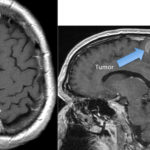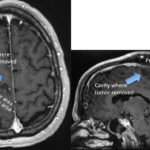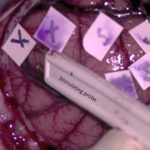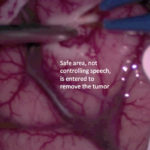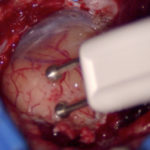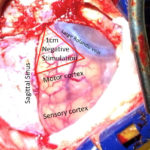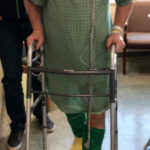There are certain areas of the brain, called “eloquent” areas, which are considered more important than others. Examples of “eloquent” areas are:
- The region when movement is initiated, called the motor cortex
- The region where sensation is processed, called the sensory cortex
- The region where speech is initiated, called the speech cortex
Unfortunately, tumors or abnormal collections/ configurations of blood vessels (vascular malformations) can occur in or around these areas and cause significant symptoms.
Surgery can be performed to improve the symptoms and remove the tumor or vascular malformation.
If a tumor or vascular malformation is present in, or compressing, an “eloquent” area, surgery can be performed to improve the symptoms and remove the tumor or vascular malformation.
Usually, brain surgery is performed with a patient asleep. Even though the brain tissue itself does not feel pain and does not hurt, patients often are more comfortable and less anxious having brain surgery performed while asleep.
When an “eloquent” area of the brain requires surgery, it is safer to perform the surgery awake. This allows us to have the patient speak or move their arms and legs during surgery while we work around the important structures to make sure they are not injured. Surprisingly, patients usually tolerate this procedure very well and we can still limit the patient’s anxiety with little discomfort.
If the surgery is in a motor area, the motor area of the brain is stimulated with a probe. The patient is asked to move their arm and leg during surgery to mark the motor and sensory areas, to make sure weakness does not occur. The patient’s sensory function is also tested. When removing the tumor, we need to stay at least ½ centimeter away from this region to preserve function.
The patient is able to walk with assistance the day after surgery. The patient is discharged the 2nd day after surgery.
Surgery often causes some swelling, so patients may be a little weak or numb after surgery, but this often improves with time.
If this procedure had been performed without the patient awake, it is likely they would have been permanently weak or even wheelchair bound after surgery.



